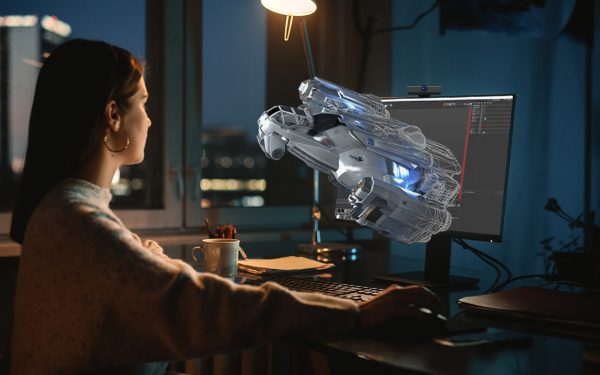A quick overview of key insights
- Origins & Applications: Glasses-free (“autostereoscopic”) 3D displays deliver immersive depth without eyewear, finding uses in entertainment, healthcare, exhibitions, advertising, and personal devices.
- Common Issues: Users face choppy playback, limited viewing zones (“dead zones”), degraded eye-tracking beyond a single viewer, and poor performance on non-3D content.
- Market Status: The global glasses-free HD 3D display market was valued at US$ 122.1 million in 2024 and is projected to reach US$ 1,103.4 million by 2030 (CAGR ~35%).
- Technical Benchmarks: Leading eye trackers (e.g., Tobii Pro Spectrum) sample at up to 1,200 Hz, achieving sub-degree gaze accuracy for single-viewer systems.
- Personal Recommendations: Build AI-powered 2D→3D content pipelines, implement rapid user-profile calibration, and pilot in high-value verticals (medical visualization, STEM education) to accelerate adoption.
Origins of Glasses-Free 3D Technology
Autostereoscopic displays create binocular depth perception without requiring any eyewear. This concept addresses the desire for fully immersive visuals that captivate consumer attention and enhance human–machine interaction.
Applications of Glasses-Free 3D
Common uses span digital signage in advertising, immersive exhibits in museums, 3D medical imaging for diagnostics, and personal electronics such as laptops and tablets. Major entertainment brands and healthcare providers are increasingly deploying glasses-free 3D for depth-enhanced training and patient education.
Common Issues in Glasses-Free 3D Products
Image Display Problems
Autostereoscopic screens often exhibit “dead zones” where only a flat (2D) or reversed-depth image is visible. Frame-rate drops and latency can cause choppy 3D playback, especially on entry-level GPUs.
Eye-Tracking Limitations
Eye-tracking–based systems typically support only single-viewer scenarios; performance degrades rapidly when tracking multiple or moving users. Calibration drift and varied user physiognomy (e.g., interpupillary distance, head movement) further reduce 3D accuracy over time.
Content Compatibility Challenges
On-the-fly 2D→3D conversions often introduce visual artifacts (ghosting, depth inversion, latency), making native 3D content still the gold standard for realism.

Case Study
Background
A premium autostereoscopic monitor manufacturer faced a return rate of ~12%, more than double the industry benchmark (<5%) due to user complaints on image quality and stability.
Problem Analysis & Feedback
- Performance Issues: Entry-level GPUs rendered only ~30 fps in 3D mode versus the target 60 fps, causing noticeable flicker and depth instability.
- Hardware Compatibility: Mismatches between 3D rendering software and display drivers led to synchronization failures and color artifacts.
- Eye-Tracking Problems: Fixed parallax-barrier zones in firmware did not adapt to individual interpupillary distances, resulting in frequent cross-talk and user discomfort.
- Personal Recommendation: Introduce dynamic, software-defined barrier adjustment and require mid-range GPUs for baseline certification to ensure stable 60 fps performance.
Realism Considerations in Glasses-Free 3D Imagery
Impact of Source Material
Native 3D content—produced with true stereoscopic cameras or computer graphics pipelines—offers far superior depth cues and reduced artifacts compared to real-time converted 2D videos.
Role of Rendering Algorithms
Advanced rendering (light-field, multi-view synthesis) and AI-based depth estimation can bridge the realism gap, but they require higher compute resources and optimized workflows.
Market Status & Outlook
Current Development Status
- The global glasses-free HD 3D display market reached US$ 122.1 million in 2024 and is forecast to exceed US$ 1.1 billion by 2030 (CAGR ~35%).
- Autostereoscopic displays accounted for a growing segment within a broader US$ 127.5 billion 3D display market in 2023, projected to expand at ~15% CAGR through 2032.
Value of Professional Consulting Teams
Expert A/V consulting reduces time-to-market and development costs by providing pre-validated test labs, certification planning, and scenario-based user testing. Their domain knowledge accelerates problem isolation, firmware calibration, and performance benchmarking.
Advantages of Professional Services
Service Philosophy
As trusted glasses-free 3D advisors, professional teams leverage decades of collaborative experience with global manufacturers to deliver tailored solutions.
Key Service Features
Faster: Rapid lab setup, tailored certification strategies, and automated testing pipelines shorten development cycles. For inquiries on integrating glasses-free 3D into your product roadmap, please contact our expert team via the online form.
Personal Recommendations
- AI-Powered Content Pipeline: Invest in deep-learning 2D→3D conversion early to build a library of near-native 3D assets.
- Modular Calibration Tools: Develop quick (≤30 s) user calibration wizards with stored profiles for consistent viewing experiences.
- Vertical-Market Pilots: Launch targeted trials in high-margin sectors—surgical visualization, STEM education—to validate ROI and refine workflows.
- Performance Monitoring: Embed real-time diagnostics for frame rate, gaze accuracy, and user comfort to inform iterative firmware/software updates.
- Ecosystem Building: Partner with developer communities to seed open-source SDKs and content kits, fostering a sustainable 3D ecosystem.
By anchoring development in data-driven analysis, embracing advanced rendering and eye-tracking technologies, and leveraging professional consulting, manufacturers can deliver seamless, immersive glasses-free 3D experiences that delight end users and drive market growth.





